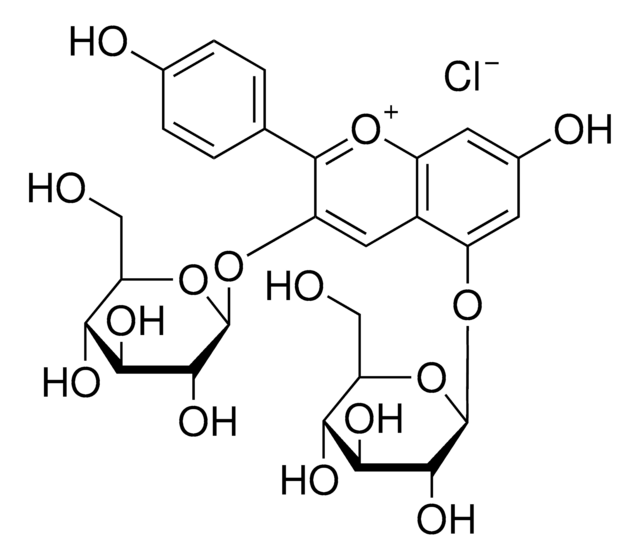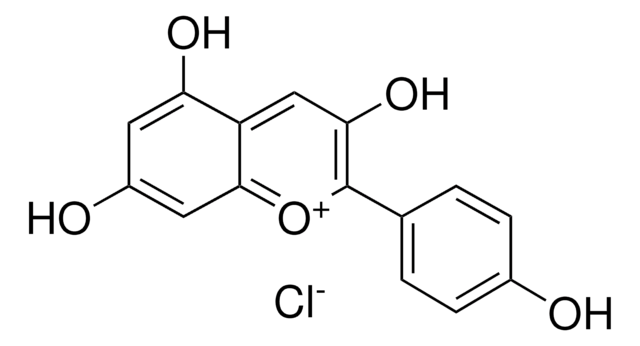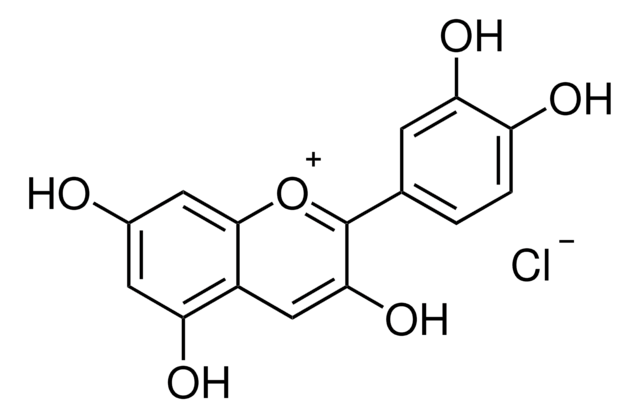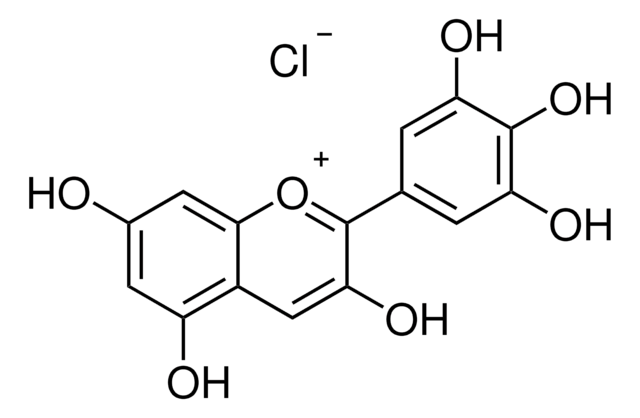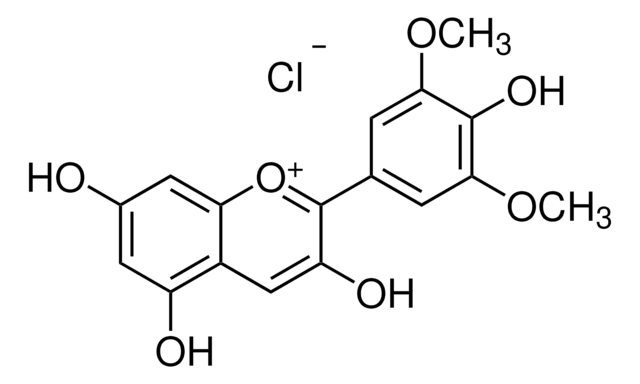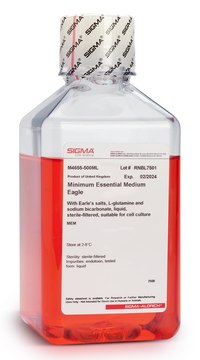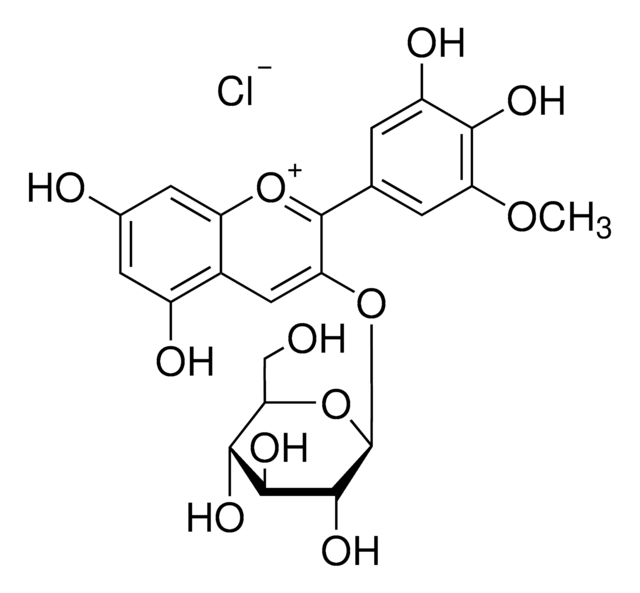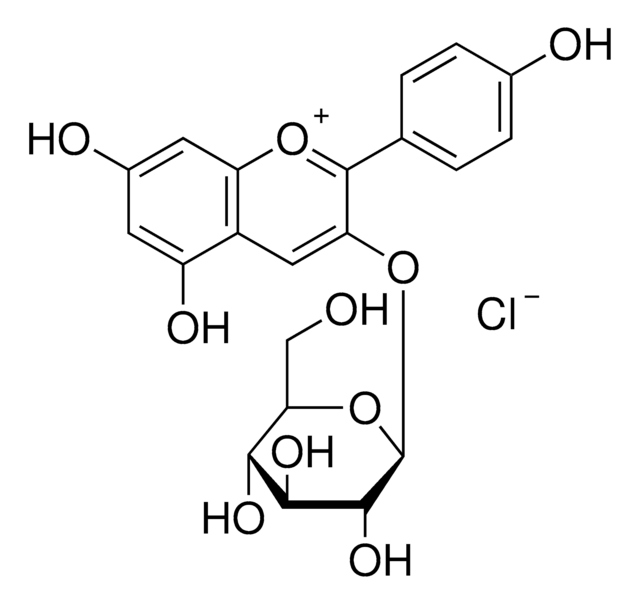P1659
Pelargonidin chloride
Sinônimo(s):
3,4′,5,7-Tetrahydroxyflavylium chloride, 3,5,7-Trihydroxy-2-(4-hydroxyphenyl)-1-benzopyrylium chloride, Pelargonidol chloride
About This Item
Produtos recomendados
Formulário
powder
Nível de qualidade
temperatura de armazenamento
2-8°C
cadeia de caracteres SMILES
[Cl-].Oc1ccc(cc1)-c2[o+]c3cc(O)cc(O)c3cc2O
InChI
1S/C15H10O5.ClH/c16-9-3-1-8(2-4-9)15-13(19)7-11-12(18)5-10(17)6-14(11)20-15;/h1-7H,(H3-,16,17,18,19);1H
chave InChI
YPVZJXMTXCOTJN-UHFFFAOYSA-N
Procurando produtos similares? Visita Guia de comparação de produtos
Aplicação
Antioxidant and anthocyanidin:
- Found in various natural sources evaluated for inhibitory effects on colon and liver cancer cells
- Used as hyroperoxide and hydrogen peroxide scavenging substance
- Used to study relationship between structure, antioxidant capacity and redox potentials
- Studied to determine the mechanism of radical-scavenging
Ações bioquímicas/fisiológicas
Código de classe de armazenamento
11 - Combustible Solids
Classe de risco de água (WGK)
WGK 3
Ponto de fulgor (°F)
Not applicable
Ponto de fulgor (°C)
Not applicable
Equipamento de proteção individual
Eyeshields, Gloves, type N95 (US)
Escolha uma das versões mais recentes:
Já possui este produto?
Encontre a documentação dos produtos que você adquiriu recentemente na biblioteca de documentos.
Os clientes também visualizaram
Artigos
Antioxidants protect biological systems from oxidative damage produced by oxygen-containing free radicals and from redoxactive transition metal ions such as iron, copper, and cadmium.
Nossa equipe de cientistas tem experiência em todas as áreas de pesquisa, incluindo Life Sciences, ciência de materiais, síntese química, cromatografia, química analítica e muitas outras.
Entre em contato com a assistência técnica